Best Places to Visit in North Carolina

Looking to visit the best vacation places in North Carolina? From misty mountains to sunny, sandy beaches, North Carolina has a way of offering it all. Whether I was hiking along the Blue Ridge Parkway, dipping my toes into the Atlantic on the Outer Banks, or uncovering the state’s rich colonial and musical heritage, every stop added a new layer to the experience. After exploring the many sides of this vibrant state on our recent four week road trip, I’ve narrowed it down to the places that I think are most worth your time.

1. Asheville
This city is ringed by natural beauty and I thought that it was one of the places to visit in North Carolina when I moved to the South. Why? The iconic Blue Ridge Parkway winds just outside town, offering panoramic overlooks and trailheads, while the French Broad River carves its way through the city, giving locals and visitors a chance to kayak, float, or just enjoy riverside views. Downtown, you’ll find a walkable grid of galleries, historic architecture, and music spilling from street corners and breweries.
We flew from Austin TX to Asheville for 2 hours 30 minutes and based ourselves at 3-star Aloft Asheville for three days. Omni Grove Park Inn is another great option.
- Best Airport: Asheville Regional Airport (AVL), with Charlotte (CLT) as a larger hub nearby
- How Many Days: 3–4 for Asheville itself, longer if you’re exploring the Parkway or nearby towns
- Time of Year to Visit: Spring for wildflowers, summer for festivals, fall for foliage, winter for cozy mountain vibes
We spent the afternoon at Still Point Wellness, where time felt suspended. I floated in warm saltwater, weightless and quiet, the world gone hush. Afterwards, I moved slower, steadier, like my body finally remembered how to rest.
We had dinner after at Curate, a beloved Spanish restaurant downtown. I ordered tapas: garlicky shrimp that sizzled in olive oil, thin slices of jamón, and a bright tomato bread. Each bite felt simple but layered, the flavors lingering with warmth and spice. The room buzzed with conversation, and the smell of paprika hung in the air.
So where should you eat in Asheville? This city is a food-lover’s playground. Start your day with biscuits at Biscuit Head, grab creative farm-to-table dishes at Rhubarb, or enjoy tapas at Cúrate, one of Asheville’s most acclaimed spots. Don’t miss the brewery scene (Wicked Weed and Burial Beer Co. really stand out) and for a sweet finish, try French Broad Chocolate Lounge downtown.
What should you do in Asheville? Hike to waterfalls in Pisgah National Forest, explore trails at the North Carolina Arboretum, or drive the Blue Ridge Parkway for unmatched views. Culture seekers will love the River Arts District, where artists open their studios to the public, and history buffs can spend a day touring the grand Biltmore Estate. Music lovers will find plenty of live shows, from bluegrass to indie rock, at venues across the city.
- Location: In western North Carolina in the Blue Ridge Mountains, north of Hendersonville and south of Weaverville
- Map & Directions
What I loved best:
For us, the highlights were catching a sunset from the Parkway, wandering through the colorful River Arts District murals, and sipping cider while listening to live bluegrass downtown. Asheville delivers that rare mix of mountain calm and cultural vibrancy—making it the perfect place to recharge and explore.
A downside? Parking downtown was tricky, especially on weekends.
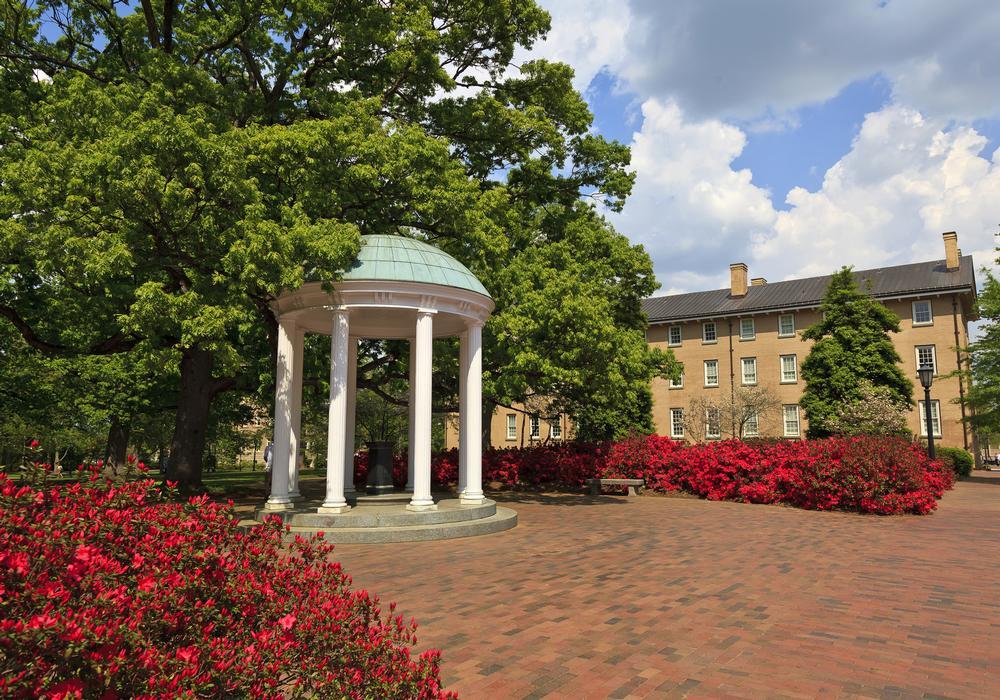
2. Chapel Hill
This is North Carolina’s quintessential college town with a cultured Southern twist. Anchored by the University of North Carolina at Chapel Hill, the town radiates energy from its blend of academics, sports, history, and creative spirit.
"The Southern Part of Heaven" is part of the vibrant Triangle region (with Durham and Raleigh just a short drive away), but it holds its own with its walkable downtown, thriving music scene, and food culture that punches well above its size. Franklin Street, the town’s main artery, buzzes with Tar Heel pride on game days and offers a mix of local dining, bookstores, and nightlife the rest of the year.
- Best Airport: Raleigh-Durham International (RDU), about 30 minutes away
- How Many Days: 2–3 for Chapel Hill itself, longer if exploring the Triangle
- Time of Year to Visit: Spring for blooms and campus life, fall for college football and vibrant foliage
I enjoyed wandering through the Coker Arboretum (free) at golden hour. The dappled light and hush of campus in early evening made it feel like time had slowed down just for me.
We had breakfast at Sunrise Biscuit Kitchen, a drive-thru gem loved by locals. I had their famous chicken biscuit ($4.99), crispy, peppery chicken tucked into a buttery biscuit, with a side of hash browns. I ate it in the car with the windows down, parked under a tree, and it was perfect.
Where do you stay in Chapel Hill? We checked into the 4-star historic Carolina Inn, located on campus for two days. I loved its Southern hospitality with elegant touches.
- Location: In central North Carolina within the Research Triangle region, west of Durham and southeast of Hillsborough
- Map & Directions
Be sure to check out the Ackland Art Museum. History buffs will appreciate the Morehead Planetarium, where astronauts once trained, while music lovers should look for shows at Cat’s Cradle in nearby Carrboro, one of the Southeast’s legendary venues. Nature is never far away either, with trails like Battle Park offering a peaceful forest escape right in town.
What I loved best:
The Franklin Street staple Sutton’s Drug Store delivers nostalgic diner vibes, while Crook’s Corner is amazing for Southern classics like shrimp and grits.
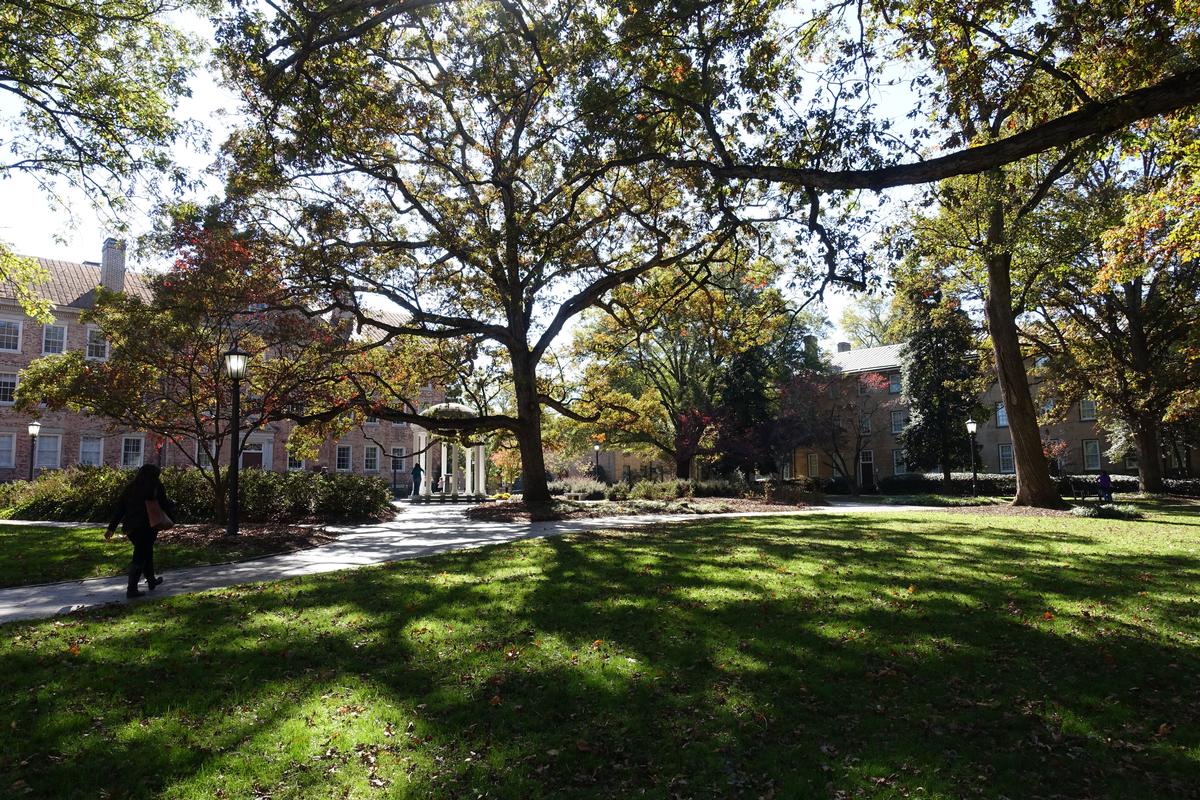
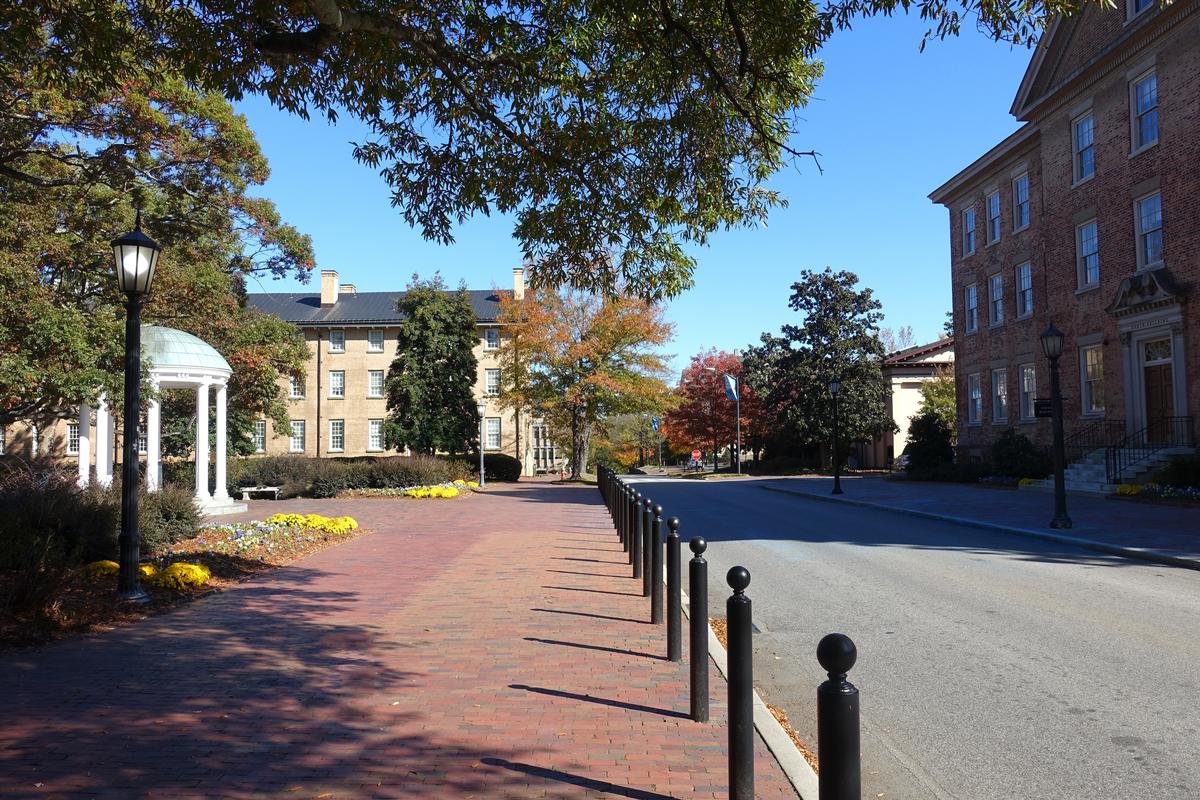
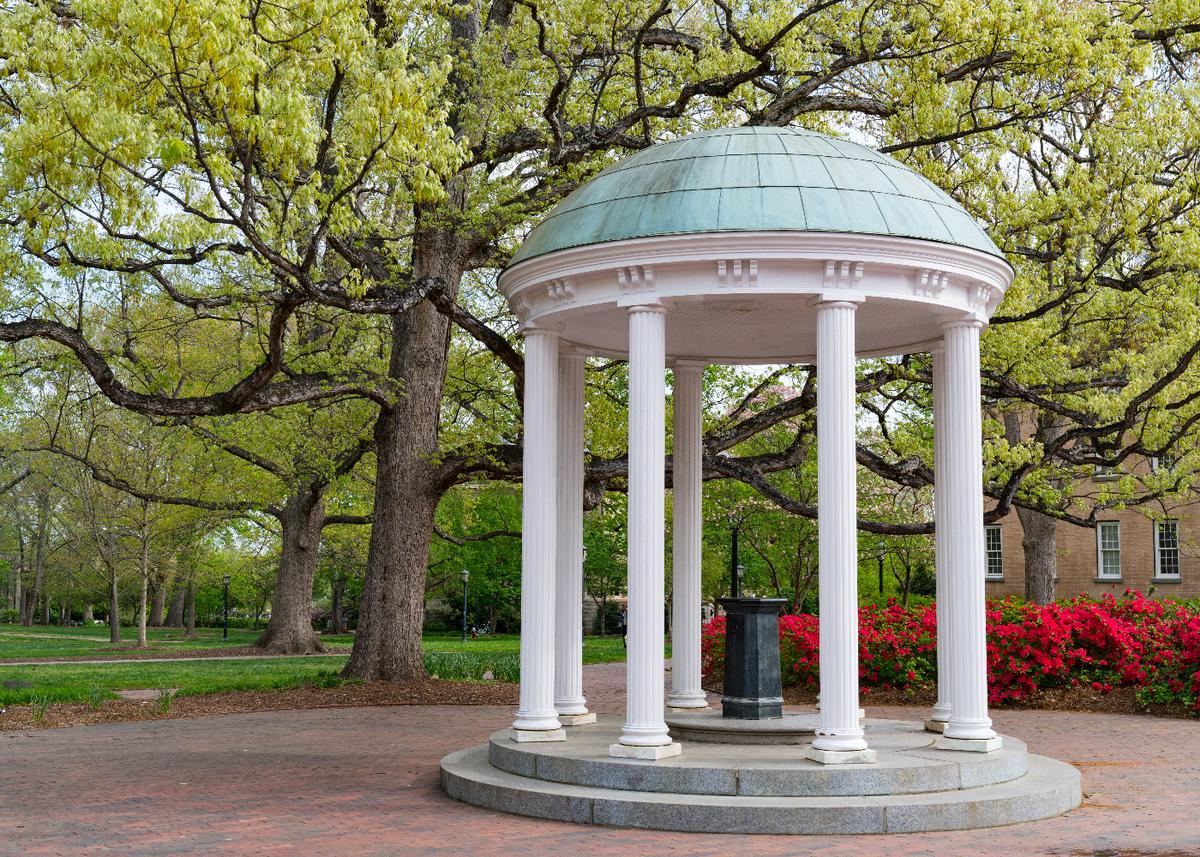

3. Charlotte
July turned this city into the ultimate Southern city escape for me — sunny afternoons, warm evenings, and just the right mix of laid-back charm and modern energy. I adored how the Queen City came alive with rooftop concerts, open-air markets, and the cheerful buzz of locals soaking up summer at breweries and greenway trails.
I drove 2 hours and 15 minutes from Asheville and spent seven blissful days in a vacation rental, biking the Rail Trail through South End’s colorful murals, kayaking on Lake Norman, exploring the Mint Museum’s contemporary art collections, and tasting my way through the city’s craft scene — especially at Lenny Boy Brewing Co., where small-batch kombucha and locally brewed beer made the perfect refreshment after a day in the Carolina sun.
The CPCC Art Galleries are tucked into Central Piedmont’s campus, but they don’t feel academic in the stiff sense. I wandered through the Ross Gallery first, where student and regional works shared the walls like old friends. Then we strolled through the gardens outside before heading into the second space, the Overcash Gallery. Afterward, I walked a few blocks and sat down at Sunflour Baking Company for a late lunch. Best of all, it's free admission!
Reid’s Fine Foods is a great place for a quick lunch while exploring.
- Best Airport: Charlotte Douglas International (CLT)
- How Many Days: 2–4 for the city itself, longer if exploring nearby lakes or day-trips
- Time of Year to Visit: Spring and fall for mild weather, summer for lake life, winter for festive events
- Location: In south-central North Carolina near the South Carolina border, northwest of Matthews and northeast of Gastonia
- Map & Directions
What I loved best:
Staying at the chic 4-star Kimpton Tryon Park Hotel, where floor-to-ceiling windows framed the skyline and evenings on the rooftop bar felt electric was my personal highlight.
A downside? Uptown traffic during rush hour was heavy, and navigating one-way streets slowed me down.
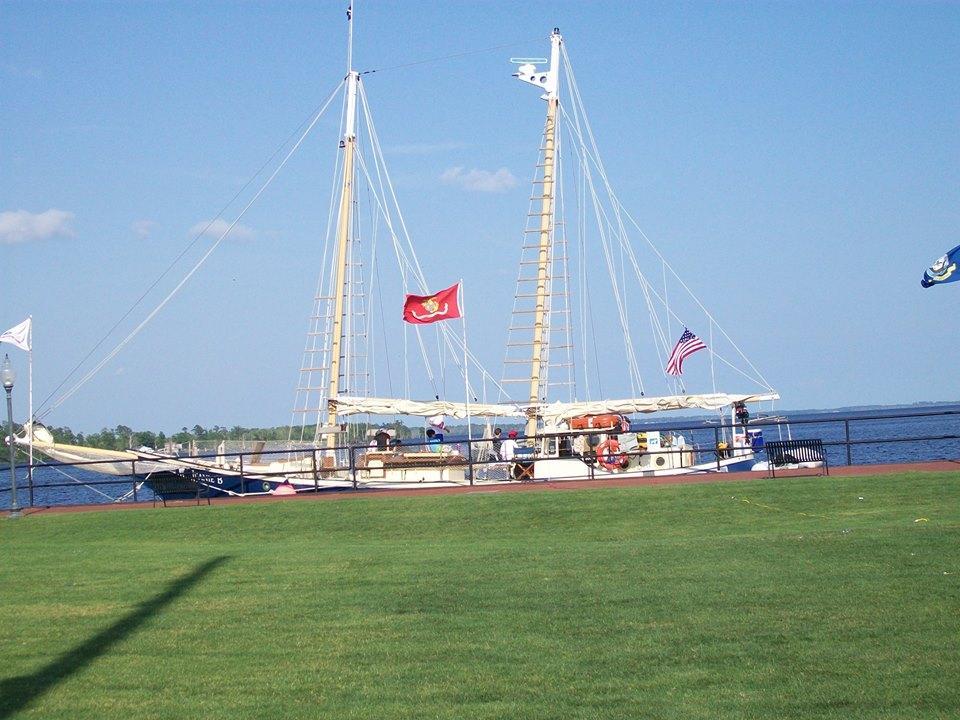
4. Elizabeth City
Welcome the “Harbor of Hospitality” on North Carolina’s Inner Banks. Perched along the Pasquotank River, this charming small city blends maritime history, a walkable downtown, and easy access to the Albemarle Sound. Known for its friendly locals and laid-back waterfront vibe, Elizabeth City makes for a quiet yet engaging getaway in coastal Carolina.
We drove east from Raleigh, about 3 hours across flat farmland and pine woods. Then the Pasquotank River shimmered into view. Elizabeth City welcomed us with historic waterfront streets, pastel-painted homes, and scenic boats drifting in and out of the harbor.
The river is at the heart of life here: docks and marinas line the waterfront, sailboats drift by, and sunsets over the Pasquotank set the evening scene. Just beyond town, you’ll find easy access to kayaking, fishing, and exploring the Albemarle region’s network of sounds and rivers. It’s a destination that feels off the beaten path, but full of simple, authentic charm.
- Best Airport: Norfolk International (ORF), about an hour away; Raleigh-Durham (RDU) for larger connections
- How Many Days: 1–2 for the city itself, longer if exploring nearby coastal towns and waterways
- Time of Year to Visit: Spring and fall for mild weather, summer for water activities, winter for a peaceful retreat
Where do you stay in Elizabeth City? We checked into The Culpepper Inn for two days that offers a historic stay.
So where should you eat in Elizabeth City? Dining here highlights local seafood and Southern comfort. Cypress Creek Grill is a downtown favorite for riverside dining, while Hoppin’ Johnz serves up creative takes on Southern classics.
- Location: In northeastern North Carolina along the Pasquotank River, south of the Virginia state line and west of the Outer Banks
- Map & Directions
What should you do in Elizabeth City? Start with the Museum of the Albemarle, which brings the region’s history to life. Stroll along the waterfront and Mariners’ Wharf Park and catch a concert or community event. Kayak or paddleboard along the Pasquotank, or take a short drive to Dismal Swamp State Park for hiking and biking along historic canals. History buffs will enjoy exploring the city’s historic districts, lined with Victorian homes and shaded streets.
What I loved best:
Montero’s Restaurant for a casual meal.
A downside? Some of the shops and cafés downtown closed early. I wished the waterfront stayed lively a little longer after dark.

5. Durham, North Carolina
I thought that this was one of the places to visit in North Carolina when I visited this month. Why? Once a tobacco hub, Durham has reinvented itself as a vibrant city of tech startups, world-class universities, and a nationally recognized food scene. Anchored by Duke University and the revitalized American Tobacco Campus, Durham feels both historic and forward-looking—an urban gem in the heart of the Triangle.
- Best Airport: Raleigh-Durham International (RDU), about 20 minutes away
- How Many Days: 2–3 for the city itself, longer if pairing with Raleigh or Chapel Hill
- Time of Year to Visit: Spring and fall for ideal weather and festivals; winter for a quieter, cozy experience
We drove just 20 minutes north from Chapel Hill, slipping quickly onto Durham’s city streets. Brick smokestacks rose against the skyline. The converted warehouses of the American Tobacco Campus came into view, glowing with strings of lights that made the place feel alive even from a distance. We based ourselves at 21c Museum Hotel for two days, which doubles as an art gallery.
My highlight was exploring the American Tobacco Campus courtyard in the morning. Workers carried coffee past fountains, couples strolled hand in hand, and the hum of conversation bounced off brick walls once stained by factory days. It felt communal, a city living in its own history without being weighed down by it.
I had dinner at Mellow Mushroom inside the American Tobacco Campus. I ordered a specialty pizza with caramelized onions, mushrooms, and mozzarella. The crust came crisp on the outside, chewy within, the toppings smoky and sweet. The smell of fresh dough and garlic filled the air as music drifted from the open courtyard outside.
- Location: In central North Carolina within the Research Triangle region, northwest of Raleigh and east of Chapel Hill
- Map & Directions
What should you do in Durham? Start with a walk through Duke University’s campus, home to the stunning Duke Chapel and the Sarah P. Duke Gardens. Explore the American Tobacco Campus and nearby Durham Bulls Athletic Park, where catching a minor league baseball game is a summer tradition. Art lovers should visit the Nasher Museum of Art, while history buffs can tour the Museum of Durham History.
What I loved best:
The Eno River State Park for trails and swimming holes just minutes from downtown.
A downside? Parking near the campus was tight, especially on weekend evenings.
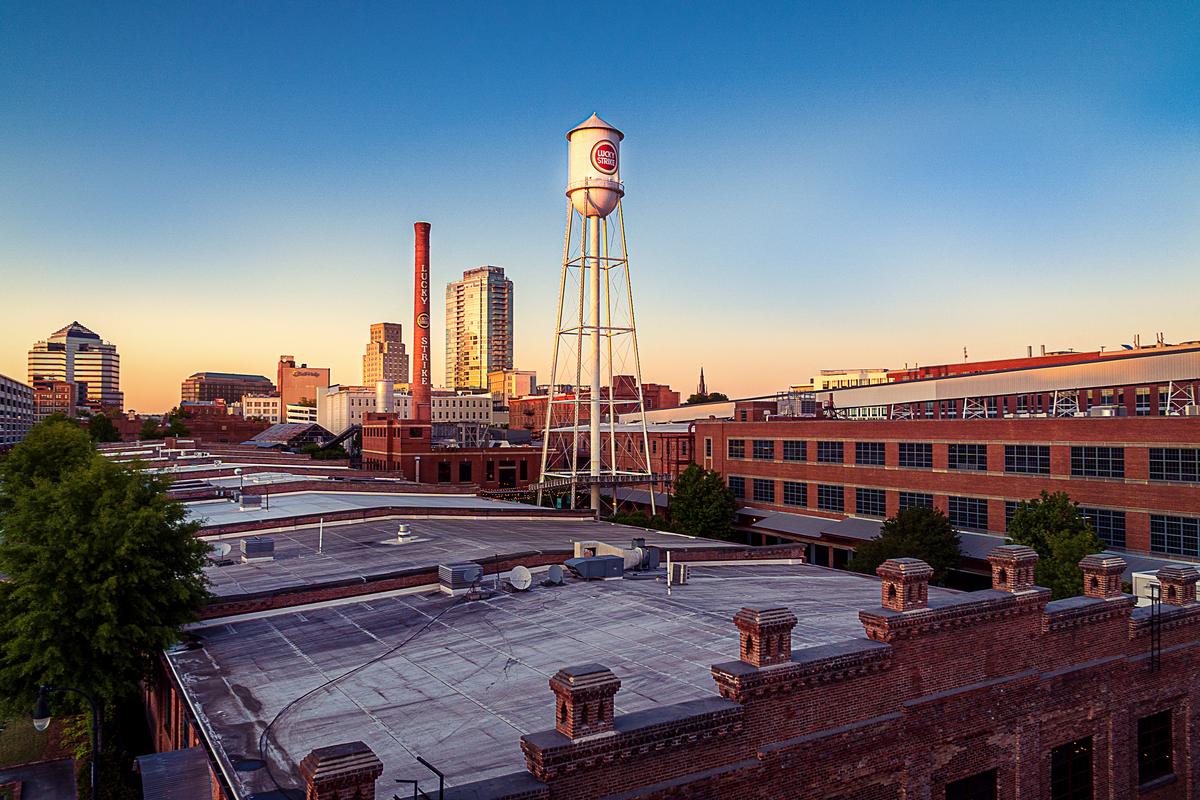

6. Wilmington, North Carolina
Located along the Cape Fear River and just minutes from Atlantic beaches, this city blends maritime charm, a lively riverfront, and a thriving arts and dining scene. Its walkable historic district, lined with centuries-old oaks and colorful homes, makes it one of the state’s most picturesque cities.
- Best Airport: Wilmington International (ILM)
- How Many Days: 2–3 for the city itself, 4–5 if including nearby beaches
- Time of Year to Visit: Spring and fall for mild weather, summer for peak beach season, winter for fewer crowds and cozy riverfront strolls
We drove about two hours southeast from Raleigh, the road flattening as it neared the coast. By the time we pulled into Wilmington, the air was thick with salt and the Cape Fear River shimmered alongside the historic downtown streets. We stayed an easy week in a vacation rental.
I enjoyed exploring Airlie Gardens ($10) in the morning. The paths wound past azaleas and live oaks. Their branches were heavy with Spanish moss. The air was floral and sweet. The stillness made it easy to forget I was just minutes from downtown.
So where should you eat in Wilmington? Dockside Restaurant is a local favorite on the water, while Elijah’s and Pilot House offer riverside dining downtown. Indochine is beloved for its eclectic atmosphere and Thai cuisine, while newer spots like Savorez bring a modern, Latin-inspired twist.
What should you do in Wilmington? Begin with a stroll along the Riverwalk, lined with shops, cafes, and live music. History lovers will appreciate the Bellamy Mansion Museum and a tour of the Battleship North Carolina, moored just across the river. The Cameron Art Museum highlights local and international works, while Airlie Gardens offers trails, sculptures, and blooming azaleas. When the sun calls, head to Wrightsville Beach for surfing, Carolina Beach for boardwalk fun, or Kure Beach for a quieter coastal escape.
- Location: In southeastern North Carolina along the Cape Fear River, near the Atlantic coast, south of Jacksonville and north of Carolina Beach
- Map & Directions
What I loved best:
Kilwin’s where we had sweet treats right on the riverwalk.
A downside? Summer weekends brought heavy crowds to the Riverwalk.


7. Winston-Salem
Welcome to North Carolina’s “Twin City” that balances historic roots with a modern artsy edge. Once known as a tobacco and textile hub, Winston-Salem has redefined itself as a center for innovation, education, and creativity. From the living history of Old Salem Museums & Gardens to the galleries of the Reynolda House Museum of American Art and the buzz of Foothills Brewing, I found that the city offers both heritage and fresh energy.
We stayed at Historic Brookstown Inn for two days, in a setting that is both cozy and historic since the inn was originally a cotton mill built in 1837, and one of the best weekend getaways in North Carolina!
- Best Airport: Piedmont Triad International (GSO), about 30 minutes away; Charlotte Douglas (CLT) for a larger hub
- How Many Days: 2–3 for the city itself, longer if pairing with Greensboro or the Yadkin Valley wine region
- Time of Year to Visit: Spring and fall for festivals and comfortable weather, winter for cozy museums, summer for nearby wine trails
So where should you eat and drink in Winston-Salem? The food scene is a tasty mix of Southern comfort and modern flavors. Mozelle’s Fresh Southern Bistro serves up elevated regional classics. And when it comes to craft beer, Foothills Brewing is a must-visit—famous for its People’s Porter and Hoppyum IPA, along with a lively downtown taproom that feels like the heart of the city.
- Location: In north-central North Carolina in the Piedmont Triad region, west of Greensboro and north of Lexington
- Map & Directions
Art lovers will love SECCA (Southeastern Center for Contemporary Art), while downtown offers murals, galleries, and live music. For fresh air, Quarry Park provides skyline views, and the Yadkin Valley wine region is just a short drive away.
What I loved best:
Little Richard’s for amazing barbecue.
A downside? Some areas of downtown felt quiet after business hours, with stretches of empty streets between lively spots. It made the city feel a little fragmented at night.

8. Ocracoke, North Carolina
When I first arrived, I immediately felt the magic of this remote coastal destination that blends maritime history with a laid-back, salt-washed charm. Tucked along the southern end of the Outer Banks, it's nicknamed "Pearl of the Outer Banks" and reachable only by ferry and rewards the journey with incredible beaches and even wild ponies.
We traveled by ferry from Hatteras (about 1 hour) and spent two days based at Blackbeard’s Lodge, one of the island’s most historic stays, and we found that easy access to the village made it an ideal base for exploring.
My days were filled with sunrise walks along miles of untouched shoreline, visiting the historic Ocracoke Lighthouse, and wandering the narrow lanes lined with cottages, art shops, and cozy cafés.
What I loved best:
One of my favorite discoveries was Springer’s Point Nature Preserve, a quiet coastal forest that opens onto a secluded shoreline, perfect for spotting wildlife on vacation.

9. Elizabethtown, NC
We loved the peaceful charm of this small lakeside town, a place where Southern hospitality meets outdoor adventure. Located in southeastern North Carolina, this lovely place is surrounded by forests, farms, and waterways that make it an inviting escape for nature lovers.
We made the 1 hour 15 minute drive from Fayetteville and spent five days settled in a vacation rental here, using it as a base to explore the area. My days were filled with swimming and paddling along the crystal-clear waters of White Lake, browsing local boutiques around the historic downtown, and savoring a relaxing afternoon at Cape Fear Vineyard & Winery. This beautiful estate was my personal highlight - we loved its art-filled grounds and lakeside views!
What I loved best:
One of my favorite discoveries was Jones Lake State Park, a peaceful Carolina bay lake surrounded by longleaf pines and scenic trails—perfect for an afternoon hike.

10. Raleigh, North Carolina
Known as the “City of Oaks” for its tree-lined streets, this is a hub of government, education, and culture—anchored by its role in the Research Triangle alongside Durham and Chapel Hill. With its lively food scene, abundant green spaces, and thriving arts and music culture, Raleigh offers the perfect mix of sophistication and approachability.
- Best Airport: Raleigh-Durham International (RDU), about 20 minutes from downtown
- How Many Days: 2–3 for the city itself, longer if pairing with Durham and Chapel Hill
- Time of Year to Visit: Spring for gardens and festivals, fall for foliage and mild weather, winter for cozy museums, summer for lake days
Where do you stay in Raleigh? Downtown Raleigh offers boutique hotels like Guest House Raleigh...close to the city’s food and nightlife scene. For a touch of history, The StateView Hotel on NC State’s campus combines modern design with academic atmosphere.
So where should you eat and drink in Raleigh? Raleigh’s dining scene is one of the best in the South. Poole’s Diner, helmed by James Beard Award–winning chef Ashley Christensen, is a must-visit for modern comfort food (and its famous macaroni au gratin). Brewery Bhavana offers an unusual but fantastic combination of craft beer, dim sum, and a flower shop. Tazza Kitchen is a local favorite for wood-fired pizzas, tacos, and seasonal small plates that mix Southern and global flavors.
If you want to experience it all, book a Taste Carolina Food Tour, which takes you through multiple restaurants downtown for a sampling of the city’s best flavors.
What should you do in Raleigh? Start with the city’s outstanding museums (we loved that so many of them are free!) including the North Carolina Museum of Art, the North Carolina Museum of Natural Sciences, and the North Carolina Museum of History.
- Location: In central North Carolina within the Research Triangle region, east of Cary and south of Wake Forest
- Map & Directions
Explore the historic Oakwood neighborhood for beautifully preserved 19th-century homes, or stroll Pullen Park for family fun. Outdoors, bike or walk along the Capital Area Greenway, or head to William B. Umstead State Park for hiking and lakeside trails. Music lovers should check the lineup at Red Hat Amphitheater or Lincoln Theatre, while foodies will love Raleigh’s many food tours.
What I loved best:
The farmers’ market for local atmosphere and cheap snacks.
A downside? Downtown parking filled quickly during lunch and evening hours.


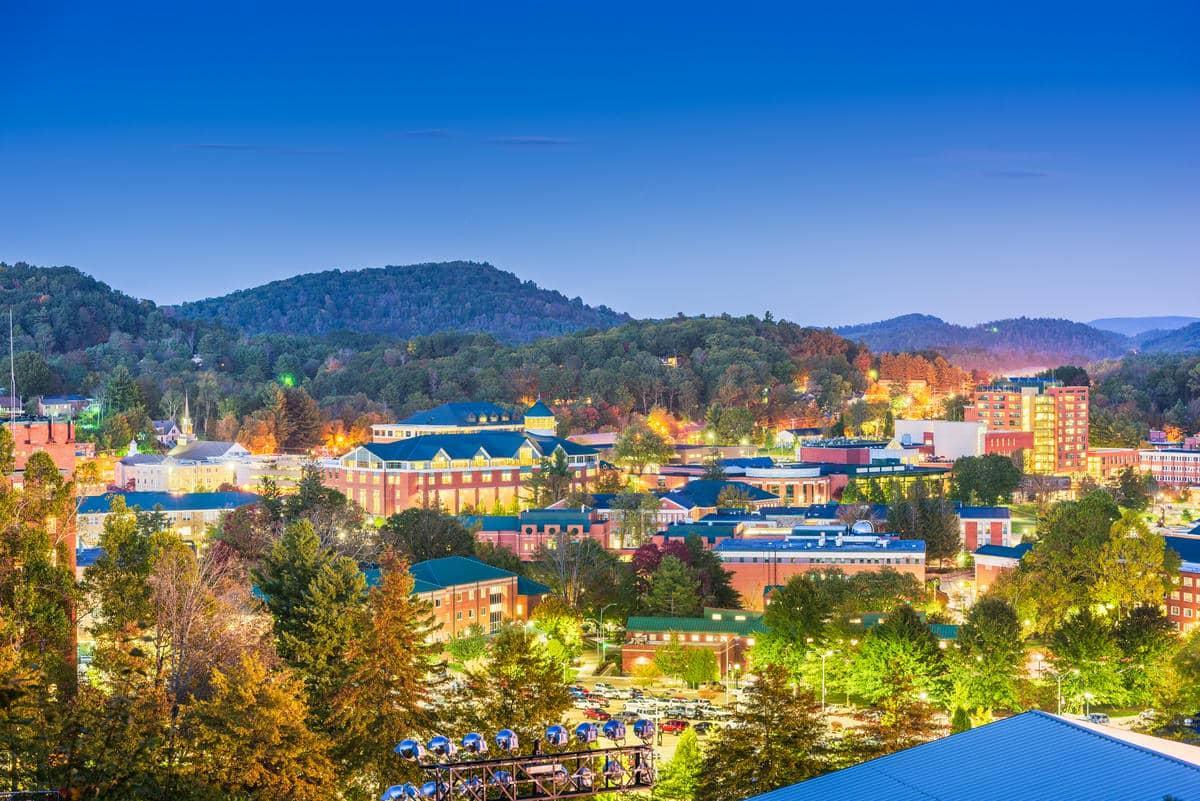
11. Boone
We love that this is a true four-season destination! There are hiking trails and river rafting in summer, incredible foliage along the Blue Ridge Parkway in fall, skiing in winter, and wildflower meadows come spring. At its core, "The Heart of the High Country" balances rugged outdoor beauty with friendly small-town charm and a growing food and craft beer scene.
Named after pioneer Daniel Boone, this mountain town blends outdoor adventure, Appalachian culture, and a laid-back college-town vibe thanks to Appalachian State University. With winding mountain roads, crisp air, and a backdrop of rolling peaks, Boone is a year-round escape that feels equal parts adventurous and cozy.
- Best Airport: Charlotte Douglas (CLT), about 2 hours away; Tri-Cities Airport (TRI) in Tennessee is another option
- How Many Days: 2–4 for Boone itself, longer if exploring the High Country (Blowing Rock, Banner Elk, Grandfather Mountain)
- Time of Year to Visit: Fall for foliage, winter for skiing, spring and summer for hiking and river adventures
Where do you stay in Boone? Downtown offers cozy stays like the Horton Hotel, with its rooftop bar overlooking King Street. For a mountain retreat, rent a cabin tucked into the woods or book a lodge near the Blue Ridge Parkway. Families will enjoy the convenience of chain hotels near campus, while romantic getaways often choose secluded cabins with hot tubs and big mountain views.
So where should you eat and drink in Boone? Boone’s food scene is casual but creative. Start the morning with a hearty breakfast at Melanie’s Food Fantasy or Stick Boy Bread Company. For lunch or dinner, Proper serves homestyle Southern plates, while Vidalia offers a refined, farm-to-table twist. Beer lovers shouldn’t miss Appalachian Mountain Brewery, a local favorite with a welcoming beer garden, and Lost Province Brewing downtown for wood-fired pizzas and craft beer under one roof.
What should you do in Boone? The outdoors is the star here. Hike Rough Ridge or Flat Top Mountain for sweeping Blue Ridge Parkway views, or head to Grandfather Mountain ($22 adult admission) for trails, a swinging bridge, and wildlife habitats. In town, stroll through the Daniel Boone Native Gardens ($5 Donation), a tranquil botanical space showcasing native Appalachian plants and flowers—perfect in spring and summer.
- Location: In northwestern North Carolina in the Blue Ridge Mountains, south of Mountain City, Tennessee, and north of Blowing Rock
- Map & Directions
In winter, nearby Sugar Mountain and Beech Mountain offer skiing and snowboarding. For something lower key, float or paddle the New River, or wander downtown Boone with its mix of quirky shops, galleries, and live music venues.
What I loved best:
Horn in the West, an outdoor drama telling the story of Daniel Boone and the region’s early settlers.

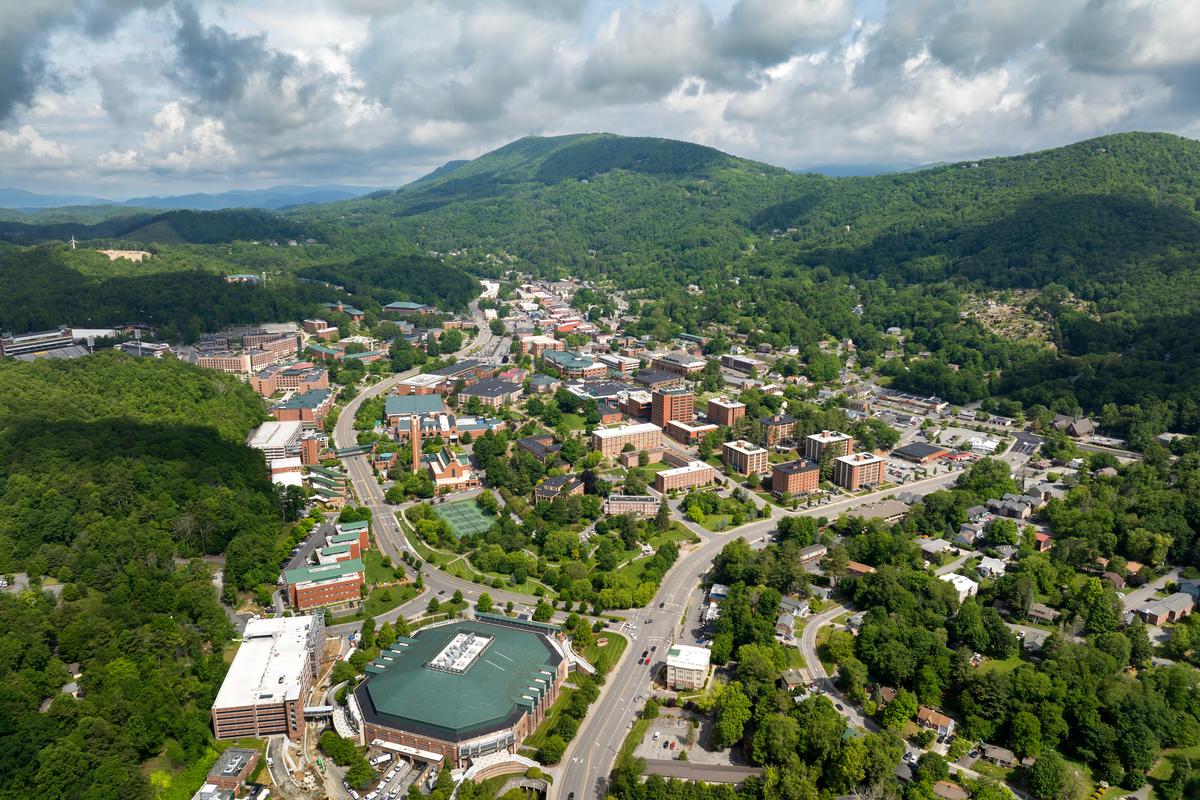
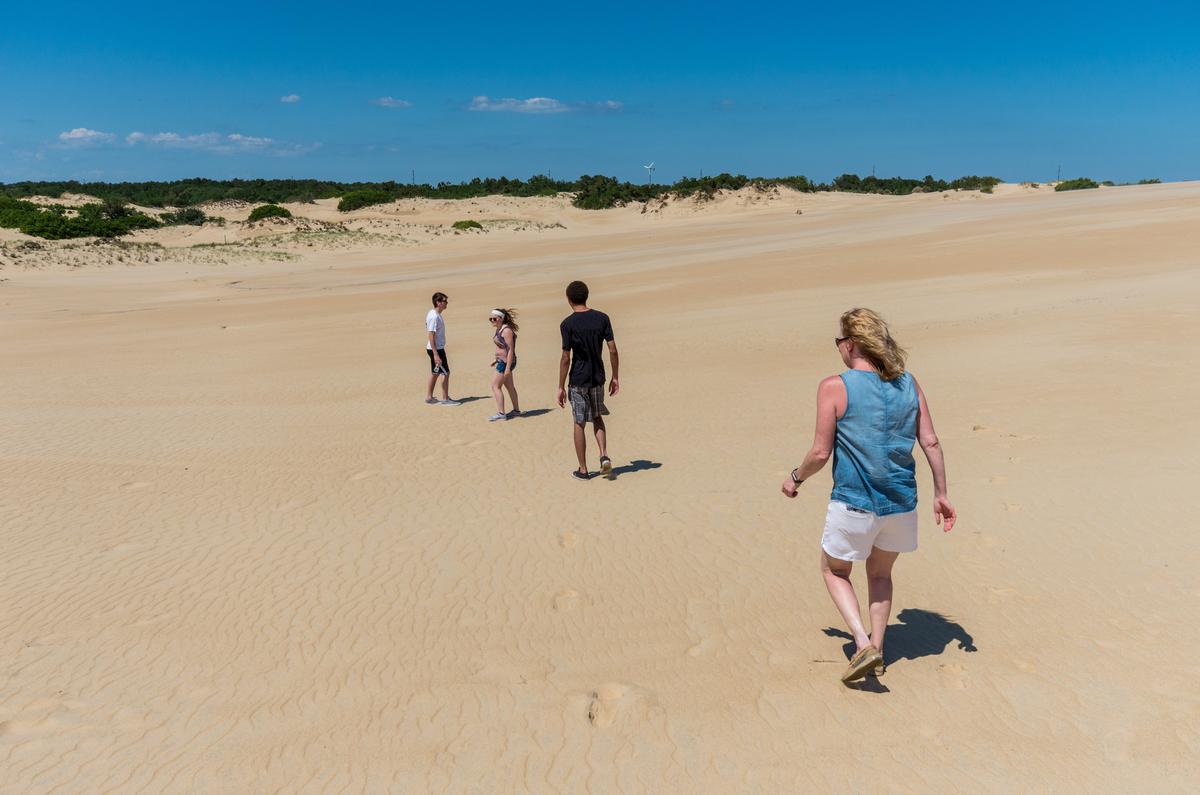
12. Jockey’s Ridge State Park
On your coastal NC getaway, this is one place not to be missed! Jockey’s Ridge State Park is home to the tallest living sand dunes on the East Coast! Located in Nags Head on North Carolina’s Outer Banks, this natural wonder is both otherworldly and accessible—an ever-shifting landscape of golden sand shaped by wind and time. Whether you’re climbing dunes, flying kites, or learning to hang glide, Jockey’s Ridge is one of the Outer Banks’ most iconic experiences.
- Best Airport: Norfolk International (ORF), about 2 hours away; Raleigh-Durham (RDU) for larger connections
- How Many Days: 1–2 hours for a quick stop, or half a day if you plan to hike, fly kites, or take a hang-gliding lesson
- Time of Year to Visit: Spring and fall for mild temperatures; summer for beach days (bring water—it gets hot!); winter for quiet sunsets
Where do you stay near Jockey’s Ridge? Base yourself in Nags Head or nearby Kill Devil Hills for easy access.
So where should you eat near Jockey’s Ridge? After dune climbing, head to local favorites like Tortugas’ Lie for Caribbean-inspired seafood, Sam & Omie’s for a classic Outer Banks diner vibe, or Blue Moon Beach Grill for hearty coastal fare.
- Location: On the Outer Banks of North Carolina in Nags Head, south of Kill Devil Hills and north of Jennette’s Pier
- Map & Directions
What should you do at Jockey’s Ridge? Start with the climb up the dunes—kids love rolling down the sandy slopes, while adults soak up panoramic views of both the sound and ocean. This is one of the best places on the East Coast to fly a kite, thanks to steady winds.
For the adventurous, sign up for a hang-gliding lesson with Kitty Hawk Kites, which operates right at the park.
What I loved best:
Sunset is magical here—bring a blanket and watch the dunes glow as the sun sinks over the sound. Trails at the base of the dunes also offer a chance to see wetlands and wildlife.
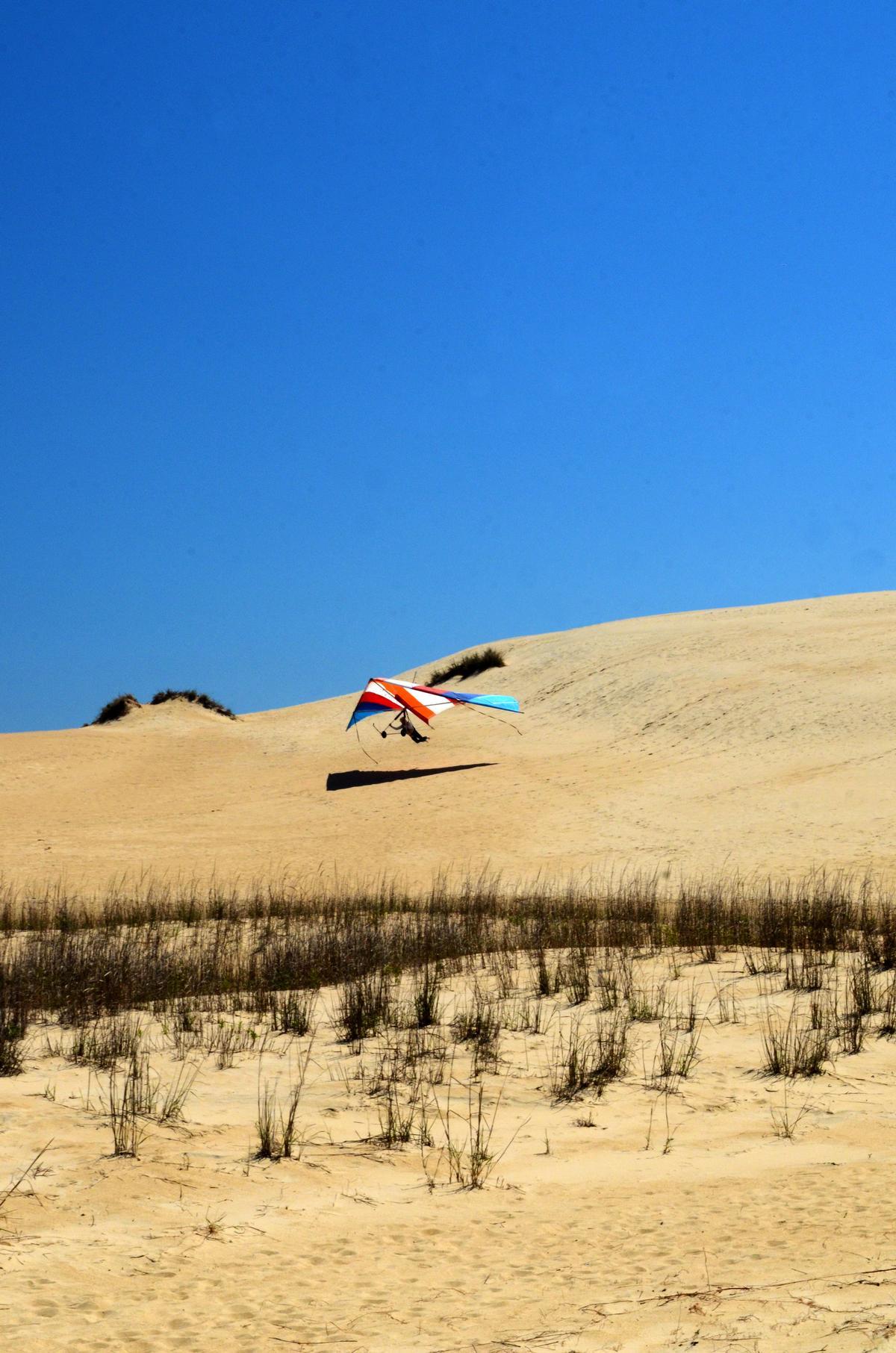
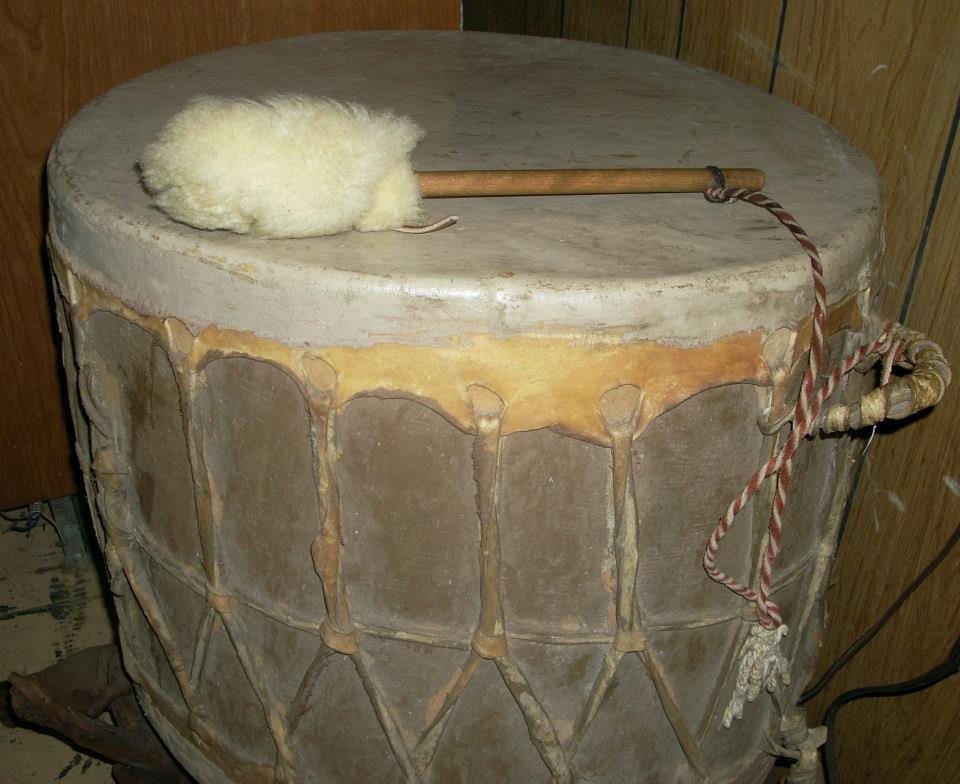
13. Frisco Native American Museum
From Cape Hatteras National Seashore, we drove about 15 minutes south to Frisco, home to the Frisco Native American Museum & Natural History Center.
I love that it highlights Native American heritage alongside local ecology, giving visitors a deeper appreciation for the region’s history and environment.
I stepped inside the old coastal building and felt the calm gently shift, shelves lined with pottery, baskets, wood tools, and even a dugout canoe discovered nearby. The still air carried a quiet respect for the land and its history. As I entered the gallery dedicated to the Croatan, Roanoke, and Hatterask tribes, I thought, “This place holds voices older than the shoreline.”
After touring the exhibits, I wandered down the nature trail through maritime forest and salt marsh, the breeze stinging a bit with sea spray. Here and there, signs invited me to pause, watch a bird at its feeder or imagine life around a reconstructed longhouse circle. The mix of artifacts and forest felt like a living story unfolding.
- Location: On Hatteras Island in North Carolina’s Outer Banks, in the village of Frisco, south of Buxton and north of Hatteras
- Map & Directions
- Location: 53536 NC Highway 12, Frisco, North Carolina
- Vibe: Quiet, thoughtful, deeply rooted in place
- Cost: Around $8/adult; $5 for youth or seniors; $20 for a family pass
- Hours: Typically open Tuesday–Sunday, 10:30 AM–5 PM; limited winter hours
What I loved best:
That this humble museum holds a nationally recognized collection in a setting where culture, nature, and education feel inseparable.
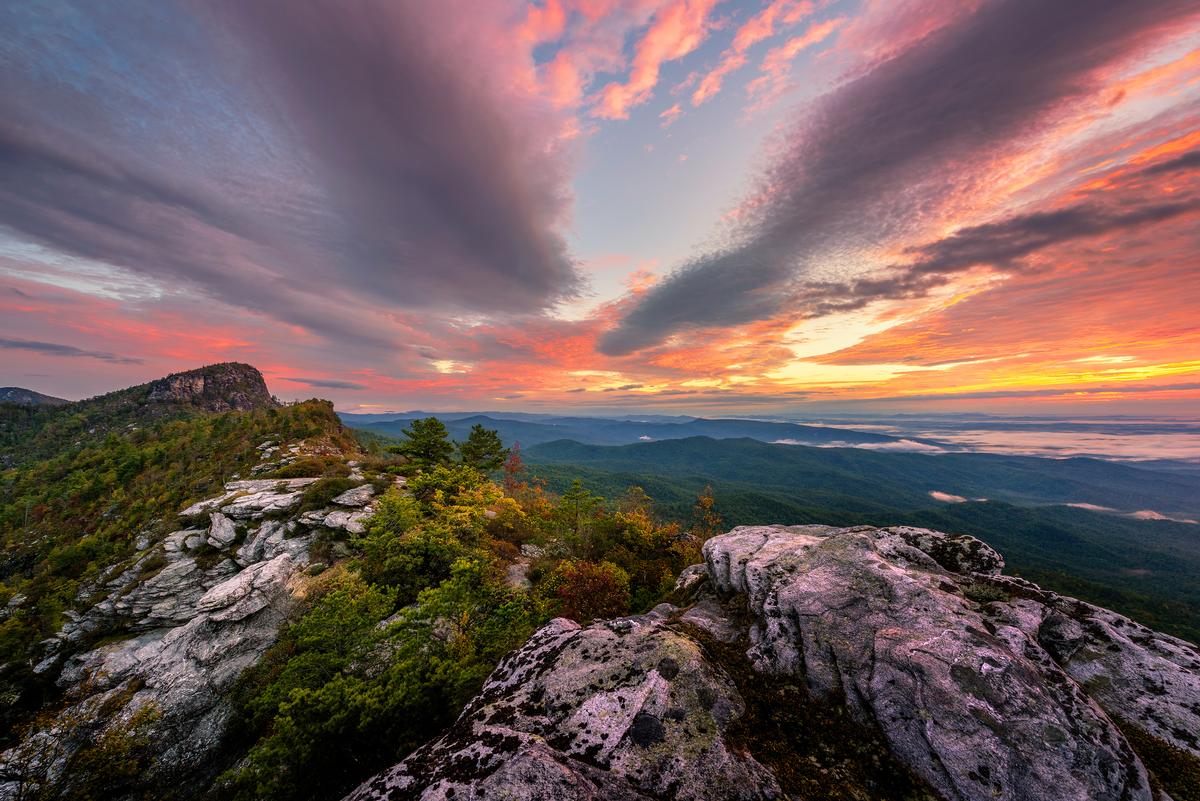
14. Linville Gorge
Tucked into North Carolina’s Blue Ridge Mountains, this wild gorge offers some of the most dramatic scenery in the Southeast. Sheer cliffs, rugged ridgelines, and the rushing Linville River make it a haven for hikers, campers, and anyone who craves raw, untamed wilderness. For a a few days, we traded city noise for the quiet call of hawks circling overhead and the steady roar of waterfalls echoing through the canyon.
The gorge is largely protected as the Linville Gorge Wilderness, part of Pisgah National Forest. Two main access points frame your visit — the east rim, with sweeping overlooks and the visitor-friendly Linville Falls area, and the west rim, where trails dive quickly into steep backcountry terrain. Whichever side you choose, expect big views and a sense of solitude that feels rare in the Southern Appalachians.
- Best Airport: Charlotte Douglas International (CLT) or Asheville Regional (AVL)
- How Many Days: 2–4 to explore both rims and hike into the gorge
- Time of Year to Visit: Spring and fall for mild temps and colorful scenery; summer is is lush but hot, while winter brings quiet solitude and icy trails
Where do you stay near Linville Gorge? Unlike a beach escape, there are no resorts here — the gorge is pure wilderness. Options include rustic campgrounds like Linville Falls Campground, dispersed backcountry camping within the wilderness, or cozy mountain rentals and inns in nearby towns like Linville, Marion, or Morganton. Staying outside the gorge gives you easy access to trailheads while still enjoying creature comforts.
So where should you eat around Linville Gorge? Dining is casual and mountain-town cozy. Stop in at Louise’s Rock House for hearty Southern breakfasts, grab a burger at Famous Louise’s in Linville Falls, or head into Morganton for breweries and farm-to-table dining. Pack plenty of trail snacks — hikes here are strenuous, and you’ll be glad for the energy boost.
What should you do in Linville Gorge? Days here are all about hiking, climbing, and soaking in the views. Don’t miss the iconic Linville Falls trails, where several overlooks give different perspectives on the roaring waterfall. Experienced hikers can descend into the gorge itself for rugged solitude along the river.
- Location: In western North Carolina within Pisgah National Forest, west of Linville Falls and south of Grandfather Mountain
- Map & Directions
What I loved best:
The Table Rock and Hawksbill Mountain trails reward you with some of the best panoramic vistas in the Blue Ridge.
For me, Linville Gorge is one of the best spots in North Carolina because it's peaceful, romantic, and an affordable place to visit!
Booking Checklist
1. Book Your Flight - I use Expedia because I like their mobile app with my itinerary. They've helped me re-book flights on many occasions. Once you reach their Gold tier, support is especially good.
2. Book Your Hotel - I use Booking.com or Expedia, depending on my destination.
3. Book Your Rental Car - I use Expedia.
4. Book your tours on Viator or Get Your Guide.
5. If you are planning to visit more than three national parks in the next 12 months, buy the America the Beautiful Pass.
